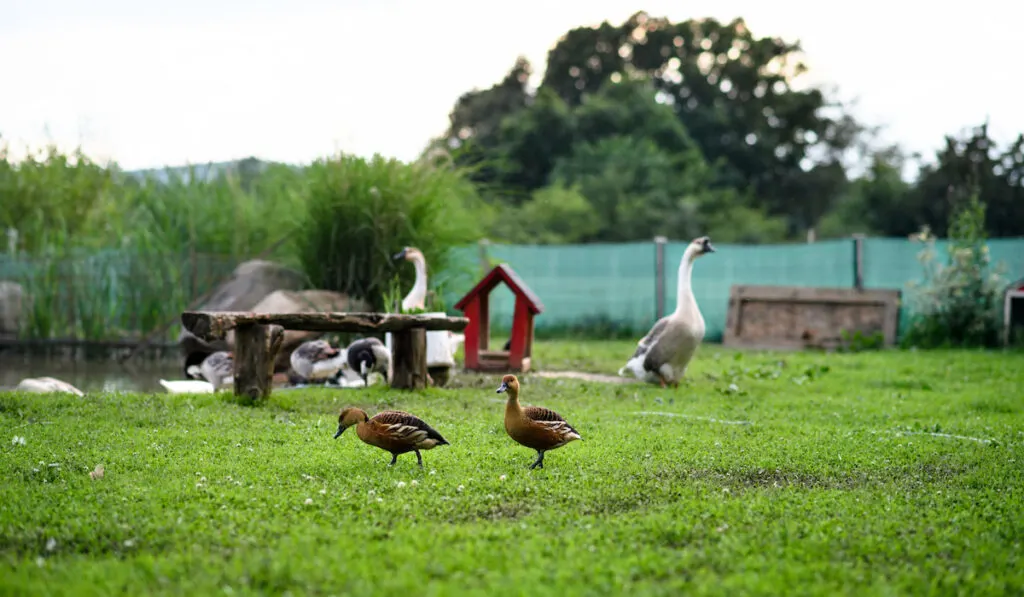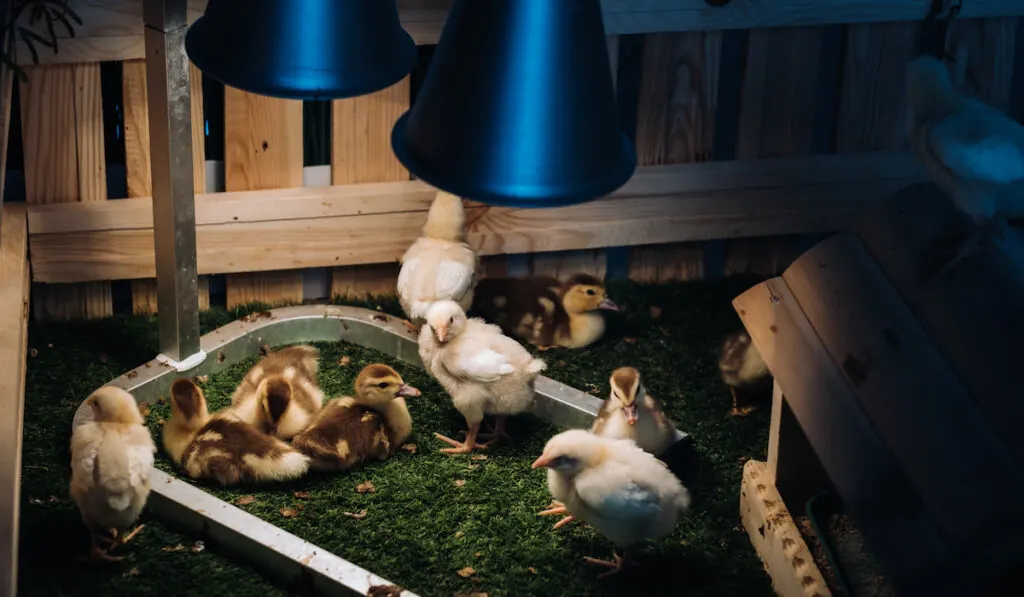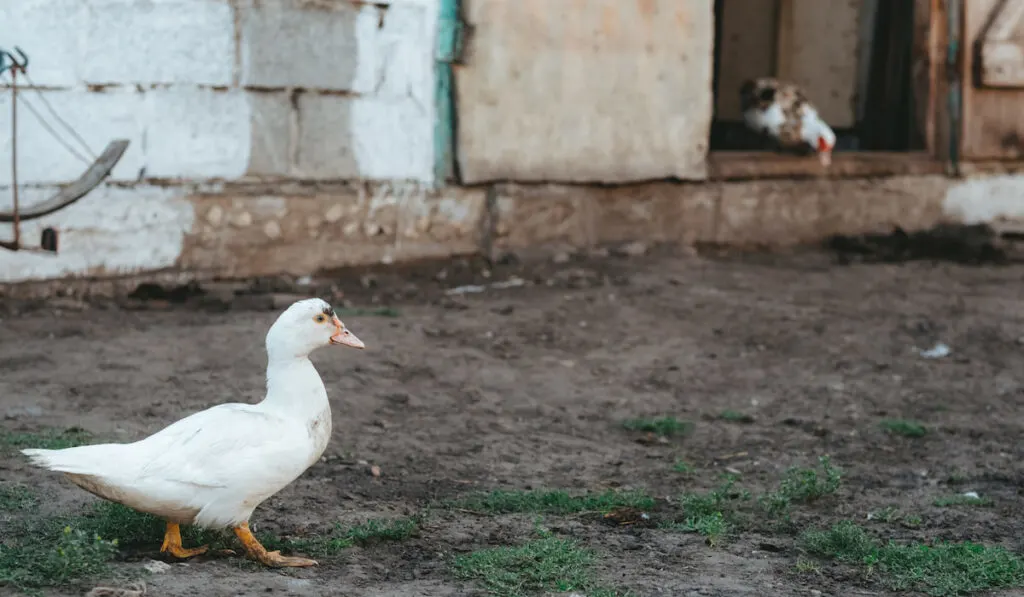Many new duck owners struggle to deciding whether their ducks need nesting boxes. Nesting boxes can provide ducks with a safe place to lay and keep watch over their eggs.
Do ducks need nesting boxes?
Ducks do not need nesting boxes in order to lay or hatch eggs. When a nesting box is provided, some ducks will use them, and others will not.
Nesting boxes are not a requirement since ducks are unpredictable and will lay their eggs based on a number of factors. Ducks are unpredictable little creatures and they do not always play by the rules.

Sometimes, despite providing a nesting box, they will insist on building their own nest in a completely different area. There are, however, some special steps you can take to encourage ducks to use a nesting box.
If your ducks choose not to use the box you provide, that is okay! The point is you should always provide a nesting box and at least give your ducks the choice. Nesting boxes can be strategically placed in areas that make it safe for your duck and their eggs.
Table of Contents
Nesting Box Placement
Duck nesting boxes should not be placed up high like chicken nesting boxes. Ducks prefer to have their nests on the ground or close to it. When setting up a nest, ducks tend to seek out areas that stay, provide cover or camouflage, and give them access to water.
When placing a nesting box, choose a spot that is sheltered and safe from the elements and potential predators. Duck eggs are a tasty treat for rats and other critters of the night. Ducks will naturally want to lay eggs in an area that is safest from predators and the weather.

Items to Put Inside a Duck Nesting Box
Duck nesting boxes do not need much to make them ready for use. Ducks will need a bedding material like straw or hay to give them a warm and comfortable place to rest their eggs. This will also help protect them and keep them safe from cracking.
While you can use shavings since they hold heat, shavings can become messy. They should be used on the bottom of the nesting box, then topped with hay or straw.
How Many Nesting Boxes Do You Need?
If you are hoping to have your ducks lay eggs for your regularly to collect, you can set up 1 box per every 3 ducks.
If your ducks are laying and brooding, it is best to provide each duck with its own nesting box.
The ducks may still move around, lay outside the boxes, or switch between boxes. However, this set up will give them the space they need to naturally and safely nest.
How to Teach Your Duck to Use a Nesting Box
Don’t worry if your ducks refuse to use the nesting boxes you provide. It is natural for ducks to want to build their own nests, but they might decide to build a nest in an area you don’t prefer. There are a few things you can try to teach your ducks to use the nesting box instead.
| Shelter in Place | If your ducks are free range, consider locking them inside a pen at night. Place the nesting box inside the enclosure. |
| Temporary Lockdown | For at least a few days, lock your ducks in an even smaller area with the nesting box at night. This will show them that the box is safe and that it is a great place to rest or lay eggs. |
| Decoy Eggs | Try putting fake eggs or an actual duck eggs inside the nest. This may trick the ducks into thinking the nest is being used. |
5 Ideas to Make Your Own Duck Nesting Boxes
1. Make Use of a Spare Doghouse
An unused doghouse will make a great nesting box for your ducks. They provide shelter as well as safety, and there are often no modifications needed. Doghouses have a long lifespan and can last for years as a duck nesting box.
2. Use a Wooden Crate
A wooden crate can be easily modified as a nesting box. Lay the crate on one side and add straw or hay to the bottom to soften the surface.
The crate should be large enough for the ducks to enter and turn around in but small enough to feel enclosed and secure. The right size crate will also leave room for ducklings to come and go after they hatch.

3. Repurpose a Cardboard Box
A cardboard box is a great quick option for a nesting box. It is easy to modify to make a great entrance and are easy to relocate. However, cardboard boxes can become wet, dirty, or moldy over time, so they are only a temporary option.
You will have to monitor the quality of the cardboard nesting box and replace it if too much water or moisture causes it to mold or collapse.
4. Convert a Plastic Tote
A plastic tote can be repurposed as a nesting box. These are often used to store clothes or other items but can be turned on their side and easily converted for your ducks to nest in.
Plastic totes provide a smooth, dry surface for adding hay or straw, are easier to clean out, and last much longer than cardboard.
5. Build Your Own Nesting Box
If you want a more permanent and customizable option, you can design your own nesting box for your ducks. It is the most expensive option but can be the longest lasting.
You can stick with a simple box design and choose whether to include a cover depending on where you intend to place it.
If you are feeling creative, you can design a duck nesting box haven with an entrance that leads back to a hidden nesting box! This may be harder to train your ducks to use, but it is one of the safest options if predators are a concern.

What If My Ducks Suddenly Stop Using the Nesting Box?
If you collect eggs daily, your ducks may decide that their nesting box is no longer safe. They may change where they choose to lay their eggs in order to protect them from predators (and you).
To prevent this, consider investing in around 5 or 6 fake duck eggs. You can replace the real eggs you harvest with fake eggs! Your duck will not realize the real eggs are disappearing. They will think their eggs are safe and will likely keep laying them in the nesting box.
Final Thoughts
While ducks don’t require nesting boxes, they can provide your ducks with safe and easily accessible locations for laying their eggs. You can encourage your ducks to nest in the provided boxes by ensuring safe, enclosed, and dry placement. You can choose from many options to create your own nesting box. With a little encouragement, your ducks may learn to lay their eggs in a nesting box that you provide!
